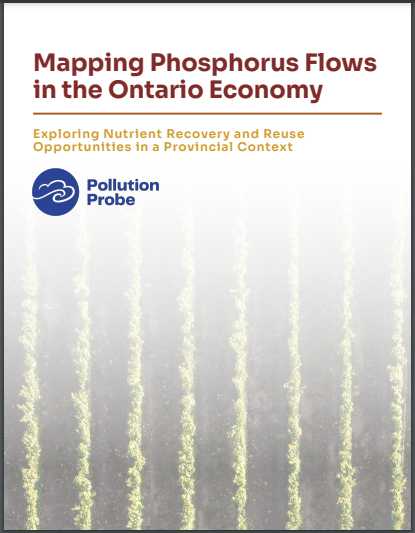The Canadian environmental organization Pollution Probe has recently released a new report, Mapping Phosphorus Flows in the Ontario Economy: Exploring Nutrient Recovery and Reuse Opportunities in a Provincial Context, produced in collaboration with academic experts from the University of Waterloo’s Water Institute, Université Laval and McGill University.

Roy Brouwer, Executive Director of the Water Institute and Professor in the Department of Economics, and Jorge Garcia Hernandez, Postdoctoral Fellow in the Department of Economics, contributed to the recently published report that received financial support from Environment and Climate Change Canada, to pursue an integrated approach in determining how phosphorus is used in Ontario and its movement throughout the provincial economy. To this end, Jorge Garcia Hernandez collected and synthesized large amounts of data from various data sources.
“Having insight into P-flows in the economy of Ontario is key to identifying the potential for resource recovery. There is a lot of data and information synthesized in a structured manner by this project as an important first step to support policy and decision-making in this area,” explains Professor Brouwer.
Phosphorus is a non-renewable and non-substitutable resource that is essential for crop growth and food security. Canada relies heavily on imports of phosphorus that have the potential to increase in price as supplies are depleted, pointing to a need to take proactive measures to ensure its sustainable use over the long term. Phosphorus has a wide range of applications, including as fertilizer, in detergents, flame retardants, and more, but when found in excess in the environment, it can contribute to harmful algal blooms that threaten aquatic ecosystems and drinking water supplies. This new report offers insight into where phosphorus losses may occur, which is particularly important for those parts of the province experiencing considerable environmental challenges related to nutrient pollution like Lake Erie.
The key findings from this report point to the most significant P flows in the province being associated with agriculture. While key waste streams from agriculture include manure and slaughterhouse waste, a large amount of phosphorus is also found in the food products that leave the sector and which are consumed by citizens. In turn, this phosphorus eventually finds its way into various urban waste streams, including municipal WWTPs, food and organic waste disposal, and septic systems.
The report explores potential opportunities for recovery and reuse in the agriculture and urban sectors, and spotlights technologies currently being piloted or available in the market, providing a set of practical examples that point to the feasibility of phosphorus recovery and reuse in Ontario.
“Exploring options for nutrient recovery and reuse is unquestionably important given the finite nature of phosphorus reserves, its role in ensuring food security and its impacts on the environment,” says Christopher Hilkene, Chief Executive Officer at Pollution Probe. “In addition to outlining the flow of phosphorus through Ontario’s economy, this report highlights practical examples of the feasibility of nutrient recovery and reuse solutions, and points to opportunities for policy frameworks to play a role in technology adoption in support of the circular economy and economic growth, the management of recovered resources, and protection of the environment.”
The report is a first step in the development of a Canadian Nutrient Recovery and Reuse platform, supported by regional hubs across the country that will act as local communities of practice. The platform will contribute to growing and strengthening a nutrient recovery and reuse economy that is reflective of the unique Canadian environmental, economic and social challenges associated with nutrient management.
Download the full report here.
